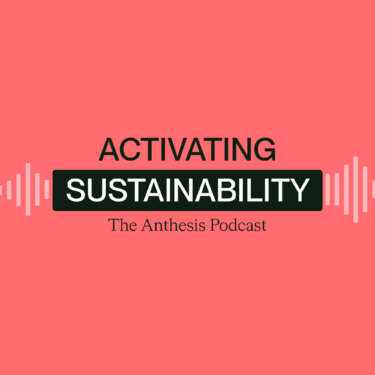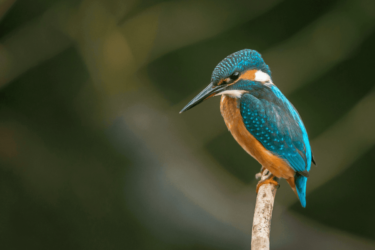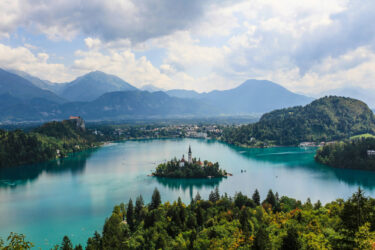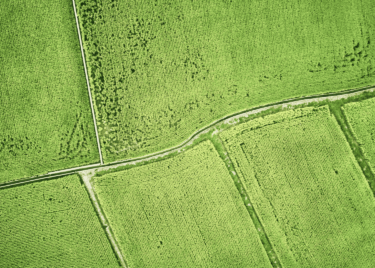
Speakers
Chris Peterson, Director
Betsy Hickman, Director
Bianca Nijhof, Global Lead for Nature Growth
Chantelle Ludski
Related Topics
Share this episode
In this Activating Sustainability episode, our host Chris Peterson is joined by Betsy Hickman, Bianca Nijhof, and Chantelle Ludski.
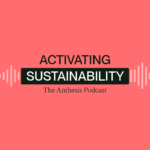
Read the transcript
Chris: Hello and welcome to Activating Sustainability, the Anthesis Podcast. I’m your host, Chris Peterson. We hope that everyone’s years are starting off well. To kick off our 2023 series, we want to revisit the UN Cop 15 Biodiversity Conference that occurred in Montreal in December. Given its importance and the potential to get a little lost in switching of the calendars, we want to make sure to get it back on everybody’s radar to explore it.
I’m really pleased to be joined by three fellow Anthesians who attended the meetings and all bring a deep passion for nature to the conversation. Bianca Nijhof, Director of Nature and Water, one of our first back-to-Back podcast guests; Betsy Hickman, Director of Growth and Strategic Initiatives, focusing on social impact, nature-based solutions; and Chantel Ludski, CEO of Anthesis Group, North America, and another returning guest.
Thank you all so much for joining. We really appreciate it. Welcome to the podcast. So, there was a lot that happened in Montreal. And before we get into the details and some of the implications, I’d love to hear from you all. What did it actually feel like to be there on the ground.
Actually, I don’t have really words for it.
For me, it was a very milestone moment that finally we were talking about nature as being this global, very important matter, which we finally decided that it’s very important to make good agreements on it and to also turn them into actions. And I was really amazed by the, uh, number of businesses being there and the Indigenous People.
So, it was really a joint effort from everybody, from all different aspects, all different backgrounds coming together.
Yeah, hard to not agree with anything that was just said. I think that my biggest takeaway was it was energizing, and you know, there’s a, a tremendous sense of anticipation that comes from waiting to see if an agreement is being reached, this anxiety as well.
And then in the final days, I think just as I was getting ready to leave Montreal for the announcement that there was an agreement was incredibly. I think echoing both of those sentiments, COP 15 really is a watershed moment. And as I think about the past 15 years of working to harness the purchasing power of the private sector into a force for good, uh, the conservation community has long known what the Convention on Biodiversity is all about.
Early days in my career with w. Only a handful of companies present, whether that was in, you know, 2010s Nigo protocol. So just seeing so many, um, you know, and thesis joined more than 400 business and financial institutions really calling upon global governments. And so, you know, we were part of a really active, you know, it’s estimated more than 2000 business and finance leaders were there on the ground in Montreal, many of them hosting and, and holding kind of bilateral conversations directly with governments to mandate that.
So the energy. The strong signal from the private sector really being an inspiring moment that, you know, we’re reaching a turning point for nature. So yeah, just a, an exciting kind of hallmark to be able to witness. That’s wonderful. And it’s great to hear the kind of energy coming out from all of you and through that experience, and I know speaking to kind of each of you in advance of this, you all identified kind of six key themes that you saw coming out of the meetings and those.
Kind of dependency recognition, finance, social aspects, food reporting, and the connectivity. And we’d love to dig a little bit into each of those. I know we can’t unpack all of them to ground, but maybe to start off, Bianca, if you could speak a little bit to that dependency recognition and kind of what you saw there.
Yeah, thanks. Yeah. For me, that was really a turning point. We obviously already, for decades are aware of doing environmental impact assessments, and we always talk about the impact we have on things, but we hardly recognize or realize our dependency on, in this case, nature, on natural resources. And I think.
Maybe also over the years, what has been happening in our world and on our planet. Climate change, for example, but also the Covid Pandemic. It really became more aware that there’s also a dependency of organizations, of businesses on nature, and that was really what struck me during this cop and everything happening around it.
The dependency part is much more recognized and that it is a risk of business continuity, that if you don’t take care of nature and, and then nature will strike. That’s actually what you see happening. So availability of resources, we thought it was like an endless resource we could always use, and now you see that companies and organizations realize that there’s a limit to the resources or to the availability of these resources or being able to reach the resources.
Maybe especially very visible also in the food and agriculture sector that, for example, pollination. Less pollination, meaning less food. That has a direct impact on us as humanity, and it’s sad that it had to come that far, but the fact that we now realize that we are dependent on nature and that that in the end brings a business risk as well, which translates into a value, sometimes a monetary value.
I think that is really what was realized and what you saw very present at COP 15, and that even while we used to say impacts and dependencies of a business on nature, we actually rephrased it to dependencies and. Of a business on nature, and I really like that, that we put it so front and. Chris, can I just add something to that dependency and something which I don’t think anybody talks about enough is the dependency on nature for human health and human mental wellbeing.
And Betsy and I joined a session on Sunday where this was discussed extensively, and it’s certainly from a very personal perspective, something that I long felt that I, getting back into nature just helps me rebalance. But there’s incredible research and studies over a. Period of time demonstrating that important linkage between nature and, you know, human health.
And I think that is now starting to really come to the fore and you know, the extent to which COP 15 is helping accelerate that understanding, I think can’t be, we can’t be thankful enough. And maybe picking up on a point that Bianca made around kind of that risk element, I’d be curious maybe Chantel kind of, I know food and ag is a real interest of yours and how that looks, and have you all mentioned that that was kind of a great microcosm of what risk actually looks like when we talk about biodiversity and impacts, et cetera?
Maybe could you just unpack that a little? Sure. And, and Bianca has already talked about, you know, the, the risk to biodiversity and the lack of the crisis facing bees. So that’s been long talks about, it’s just continuously, you know, the more we say it’s something, the more people start to hear it and the more people recognize that we need to do something about it.
So the risk to our food systems through lack of biodiversity. And we know there’s an incredible risk to bananas. You know, monocultures are not a healthy thing and the discussion is now shifting from it. I would say NGOs talking about it, waving a flag to financial institutions, recognizing that this is actually imperiling their investments.
And so I do feel that when the finance sector finally gets something, everybody else has to wake up because the financing, our economy is entirely linked to that. So if we, if we don’t have money flowing into. Nobody does anything. So when we have money flowing into nature and biodiversity activism and sort of the right sort of initiatives are needed to move the needle on biodiversity, I think that the world starts looking like a completely different place.
And that was probably the single biggest thing that I took away from cop in terms of why the finance sector is here. They, they’re showing up in bucket loads and they are paying attention. They’re making themselves heard. And so that is meant to mean that all the organizations in the value chain now need to do something different.
So I think that’s gonna have an incredible impact on our food and agri systems. And finally start putting the right emphasis on make sure that we don’t end up with monocultures. We are not putting crops at risk. Um, we are in investing in, in all the right initiatives to preserve our food systems. Yeah.
And Betsy, that finance piece, you mentioned, the number of business representation that was at the event. Maybe that’s a nice kind of segue to what is that looking like? What are they looking for in this space? Yeah. I mean, I think Chantel highlighted for those sectors that have the greatest, shall we say, exposure to nature related risk, food and agriculture, being at the top right alongside kind of the construction material resource sector.
And I think we heard from leading financial institutions, whether they’re lenders, whether they’re insurers, whether they’re investors. You know, if I were to, to try to summarize it, how do we prevent our global economy from sleepwalking off of a cliff? And so it was clear from a number of panels at COP 15 that really, you know, assessing the exposure of nature related risk to their lending portfolios, to their investment portfolios, to their insurance portfolio.
Is a key priority and they’re just waiting for, you know, many of them clamoring what is the K P I? What is the metric that we should be utilizing? And I think what we walked away from Montreal, having target 15 of the global biodiversity framework. Really sending a strong signal to the private sector that governments will soon be utilizing.
Could be policy, could be legislation to require large companies and financial institutions to regularly monitor, assess, and disclose those risks. And as Bianca mentioned, really those dependencies and impacts on nature across their operation, across their supply. Across their portfolios. And so, you know, if I were to look into my crystal ball, I anticipate that nature’s gonna take a page out of the same playbook as the task force for climate related financial disclosures.
Just last month we had UK Minister Goldsmith in his debrief to the UK Parliament and reporting out on COP 15 indicating that the UK government should move forward on making disclosure mandatory. Uh, recognizing. You know, while first movers can guide best practice and what it looks like to halt biodiversity loss, that only through creating a level playing field that could require a regulatory floor to enable and accelerate action.
And, and so the UK being one of the first governments to had put in place mandatory disclosure for climate related. I think we’re gonna see more countries following suit with leaders, whether that’s the uk, New Zealand was very active in the past G eight countries. Working together to really shift global finance from activities that damage nature to those that restore and protect it.
And I think that only comes through leveling that playing field, that together leading governments, playing that central role in redefining value, making, reporting on nature related impacts and depend. Risks and opportunities part of business as usual. And so I think we’re gonna see kind of burgeoning action here in the next several months.
And in that, how do we all begin to map where those risks lie? Maybe adding to that cuz Betsy touched upon it level playing field and maybe shifting responsibility of governments also to take action here. It’s also on reducing the harmful or reforming harmful subsidies. I think that’s another big thing, which for me at least came out of the COP 15.
We obviously have a lot of harmful subsidies amongst the fossil fuel industry and the fossil fuel in subsidies being an easy one. That’s one of the other main outcomes for me, that indeed redirecting the money flowing to subsidies fossil fuel industry, how can we use that to re really take on and pick up on the actions?
With regard to the other targets as part of COP 15, I think that’s really a very IMP important point as well, is as for the funding needed to take the actions, that’s really still a question how we are gonna deal with that. Similar actually to with COP 27, where we have a lot of actions, but it’s not clear how we are gonna fund those actions.
That’s a similar question you see at COP 15 and maybe even a stronger question for COP 15 and redirecting those harmful subsidies to away how you contribute to. Nature positive as a term, nature positive, didn’t make it to the agreement, but you can still see that it is about halting biodiversity laws and reversing, uh, actually nature and, and growing nature in the amount of nature.
With the 30 by 30 target that by 2030 we’ll have 30% of the land covered by nature and 30% of the sea really. Being a natural state. So I think the funding bit and redirecting the funding away from harmful subsidies is an important part in that as well. Added to what Betsy said on Target 50. I think what we are seeing is if we think about the climate movement over the past 30 or so years, looking at the crystal ball and the same way that Bessie was doing, I would predict that everything around biodiversity is going to move at a greatly accelerated pace versus what happened with climate.
I feel, and many instances, climate has been glacial and obviously been moving faster the last few years. Just looking at some of the discussions, some of the outcomes from COP 15. Some of the other activities that are happening. I would say not only on the back of COP 15, perhaps in tandem with it’s moving fast.
If you look at the initiatives of the International Sustainability Standards Board is taking at the moment around including biodiversity and corporate reporting, you know, risks around biodiversity, and then that’s moving fast. There’s not as much wrangling and long-term deliberation as it’s perhaps you’ve seen with.
So I think it’s a, a space that’s going to evolve and develop very quickly, which of course can only be a good thing given the enormous risks that, uh, global economies face and every food systems. Yeah, no, it’s amazing now that there is a trodden path right to follow. And what did that kind of cadence look like?
And maybe Bianca picking up on one of your points is that sense of one thing that did come outta Cop 27 was that sense of. Like how do we address who’s contributed to climate change? Who’s contributed to biodiversity loss, and who really is gonna bear the cost of protecting that? And I know that was one piece that came up a lot in the discussions around indigenous rights and roles, et cetera.
There were actually two things coming up. Obviously the global North versus the global south, again, the same as what you saw happening during Cop 27 came up during COP 15. Who’s gonna fund this and the global north being wealthy than the global south. So that was a contradiction you saw. Again, the other point you’re referring to indeed as the indigenous people in the local communities, cuz biodiversity in nature is.
Much more context, specific location based issue, but also the fact that what we can learn of how indu indigenous communities lift imbalance with the natural environment much more than the present communities do. So what I noticed really during COP 15, the presence of indigenous communities and really being very, very visible, outspoken and also being given the stage and referring back to their way of dealing with nature and living much more imbalance of nature and what can we learn from that.
I think that was, for me, really a very clear point, which came out of the, the COP 15 as well, and you see it in the targets as well. So the targets really including the rights and respecting the rights of, of indigenous people and local communities within whatever we. Related to nature. So I think that’s a very important point to guard that the inequality or the equity part coming up in this conversations much more.
Again, also at COP 27 and now again at COP 15, so I suspect it comes up at the water conference, the United Nations 2023 Water Conference, which we will have mid-March. That is another same aspect for water. Even more actually considering how even more dependent we are, are upon water. That will come up there definitely as.
Chris, can I just add something to that? Agree. Super interesting to see the very visible presence of indigenous people at COP 15. And just to go back to Bianca’s point about subsidies, what was clear was the recognition, the stewardship role that indigenous people have in nature. But what wasn’t clear is how are we going to recompense and pay those in.
People to look after the land, to look after nature, to to be the stewards that we asking ’em to be. And I think that’s an area that we really need to start looking at is let’s recognize the incredibly important role they can and do play, and let’s reward them for it accordingly. So let’s shift some of these crazy agricultural subsidies that we see into the right hand so that we can continue to preserve and and protect nature through the right.
Yeah, absolutely. And I know we’re gonna shift over to kind of like where do we go from here, but maybe before we do, I mean one of the themes that has come up a lot is that sense of connectivity, right? And do we feels that to a certain degree we have been approaching climate change water biodiversity as separate paths, as discreet elements.
And I, I’ve heard from all of you that sense of like, we really need to be bringing those together. I’m just curious about some of your thoughts there and how that was showing up in the. ? Well, for me it’s um, if you look at how nature it can be for 37%, the solution to the climate change mitigation, which, which we need.
So I think there’s a huge value in, in connecting them, providing the amount it, it can solve our climate change issue. But the, and, and the other way around actually climate change being a huge accelerator of biodiversity loss. Those two are very, very much intertwined. And then looking at. Water is very important to pristine nature in that sense.
They’re all intertwined. And I’m really wondering why we first, the whole world went to Egypt, then to Montreal, and now we’re going to move to New York. I would love that. And you see people like traveling to all these cops, which is very, very good. I think cause that those are the people connecting it.
But I would love us to have a joint conference on that and then adding the social aspect to it. It’s making it very complex. But I think we are living in such an intertwined world and that that is the only way to, to. To really look at all the, the different aspects in this. Um, in the earlier days we used to call it people, planet profit.
Then it became natural social, human and economic capital. And, and we have the SDGs agendas. We know that it always connected. So how can we deal with that in an interconnected way? And I think for that we need to bring the communities together or at least be aware of the linkages, which. To add on that, you know, I think both the task force for nature related financial disclosure and the Science-Based Targets network hosting several sessions at COP 15 are really trying to draw together the independencies of that nexus.
And so as we think about they’re going to. Reach net zero. Future nature has a critical role in contribution to that, and as we think about what setting science-based targets might look like, the atmosphere being a critical point that so many companies are already moving on. Sbtn kind of shining a light on a leadership group of companies that are already responding to the nature related impacts and dependencies that we talked about.
They recognize the risks and opportunities. And they’re moving forward to say, okay, what does a science-based target look like for water? If we think about freshwater ecosystems in late December, just before COPT 15, the first land methodology came out and we’ll see, uh, the kind of final methodology for oceans later this year.
And so I think the interconnectivity. Of the ecosystems, but back to some of the points that both Bianca and Chantel raised, the role of indigenous communities, local communities, and stewarding those is so vital and so where and how we see this intersection of a net zero nature positive, equitable feature coming together.
I think that’s a little bit of the glimpse that we saw on the ground in Montreal and the vision that still needs to be translated into. Yeah, the dialogue is shifting. It’s shifting from singular focus to connectivity around all the topics that, uh, be b, have just mentioned. And I think that’s also what gives us the potential to drive greater impact on change is as you start connecting the dots so you don’t do one thing on its own.
Cause there is such strong interconnectivity in for a long time. I think everybody tends to think of nature as a subset of climate. Think about the two things as very separate, and I think that mindset is now shifting to recognize all of these things need to happen in in tandem for us to literally save the planet.
Yeah. Well, and maybe that’s a nice segue to like, where do we go from here? And maybe starting big picture, what would you like to see? And then we’ll kind of dig down into like what should listeners, you know, everybody be doing today, and then kind of carry it forward from. I think Betsy and I would like to see the US signing up to, uh, cup 15 , all of us.
I think everybody, nobody would say no, but that’s not a good idea. That’s, that’s definitely my wish. I shouldn’t speak on behalf of my colleagues . Cause one, when the biggest economy in the world is not a signatory, um, I think that that’s problematic. I think there’s a tremendous amount of activity, very good activity going on under the current administration in the us.
It’s that formality of being a signatory that I would be wonderful to. Yeah, what what made me really hopeful was actually that with the Capitals Coalition and Business for Nature already, uh, and, and the leading businesses will join that mission to top 15, that they actually already said no more matter what the outcome will be.
No matter whether governments will, will say like, this is mandatory to disclose in our impact and penalties in nature, we will do it anyway. Chantel, a lot of those companies were US based companies as well. So I think that the thinking. Within the leading companies, they really understand what’s going on.
And for me, that would also be my sincere wish that we have now agreed upon these targets, yet we have to now put that into action. , that’s still what needs to happen and that’s why we have a dependency in this case on governments putting it into action, putting it into regulation. And in this case, I’m hopeful that the companies will, before the top set, we will do it anyway, that they will definitely do it anyway and are showing it now.
And if I look at the amount of questions we are receiving on companies asking us to toward them in really setting up a nature strategy. Combined with the climate strategy, combined with the inequality questions, to really look at it in an integrated way and really start taking action. I’m really hopeful that this is also gonna happen.
Yet let’s monitor this closely and there’s another copy in a year’s time. So, um, let’s monitor that this will happen and start pushing for that. Yeah, I think we’re seeing so much voluntary leadership from a Vanguard group of companies. What I am most hopeful for is for the finance sector to really show up with a clear ask that can propel some of the, shall we say, middle majority or late actors, to begin moving on this issue.
And so we saw the launch of the Nature Action 100 at Montreal. What that will do is create an engage. Platform for the broader financial community to begin asking questions of publicly listed companies. What are you doing on nature? Do you understand your risks? How are you addressing those? and what does that do to the cost of capital going forward?
What does that do to the ability for, you know, the broader economy to shift towards that nature? Positive future? I’m hopeful that we’ll see that, uh, accelerate here within the next few quarters. If, if I had my way, maybe by the end of the year just knowing that there’s some broader a. Add those institutions behind that unified methodology there.
But yeah, I think we have to move beyond the leaders to get into the broader sector shifts that we need to see. Great. And I, I think that gives a very good vision for like, where do we need to move as a society, right? But maybe taking that down or level two, our clients, our partners, the listeners, you know, within an organization trying to move this.
What do we recommend? What are, what needs to be done today? What are some of the insights that you are taking from that, that you’re providing as guidance to. I think the first thing to do, Chris, is to adopt the same approach that organizations have been doing for some time, which is just doing an assessment of where are we at in terms of our nature-based risks.
We’ve been, uh, doing a teenage tremendous amount of work on climate and now let’s add nature and biodiversity to that. Risk assessment. Cause I think for organizations, you know, having, having spent time in enterprise risk management, a different kind of voice is added to the discussion. When you look at something through the lens of risk, it becomes less fuzzy if you like.
And it’s more concrete around, we need to do something. This is actually affecting our, our viability as an organization and it’s sustainability and the broadest sense, you know, are we able to sustain ourselves as an organization if we. Fully assess all of our risks to even understand what the risk landscape is that we should be assessing.
And so I think just starting to have a really good quality conversation with all the key stakeholders around the table from, and certainly at C-Suite level, around what are all of our risks and let’s make sure we’re including biodiversity loss on that list, which has not always been happening, I would say.
Yeah, maybe. Maybe following up on what you said, Chantel. So it’s on, on the one hand risk, I always like to look at opportunities as well. There’s something good happening or there’s like the carrot and the stick story. I prefer to use the carrot instead of the stick. So let’s look at the opportunities as well and, and there are many, if you look at nature also.
And the other point, which Chantel also addressed upon, I think the governance bit is very important and especially on C-Suite. Recognizing who’s responsible for nature and who’s recognizing indeed all of the risks, but also all of the opportunities related, but have it drizzled down through your organization and even into your supply chain and your stakeholders that this is an issue, which is of importance for you as an organization.
So organizing your governance bit very well, but also looking at risks, but also at opportunities and how you can differentiate yourself as a. I wanna emphasize that point. I always say that opportunity and risk are, you know, the two sides of the same coin. So I can’t agree enough that as you assess those risks, it absolutely creates opportunities.
And I would add building a broader understanding of nature and biodiversity across key functions within the business. Most of this is gonna happen upstream in supply chains. And so where and how that education awareness and understanding, once those risks are mapped, what are the hotspots? How do we get started?
And don’t let the perfect be the enemy of the good. I think a lot of organizations can say, okay, we have to gather all the data first, and we need to have every I dotted and T cross before we can move forward with this strategy. I’m going to challenge all of us to say, You know, we need nature needs, humanity needs action quickly.
And so where we can identify there’s opportunities, how can you build partnerships with key suppliers upstream to begin to think about how your organization can influence. A nature positive future. And so just getting started, not letting the perfect be the enemy of the good. And I think that mapping of risks and opportunities is the best place to start.
It’s also what investors will be asking of companies, do you know where that lies? And, and so that being, you know, let’s, let’s get that first step underway and take it step by step from then. That’s wonderful. I love the, the challenge throwing down the gauntlet and I think it’s a great one to be pursuing, given that so many organizations I hear are kind of like, we want to, but we don’t know how.
I think this framework is really helpful, but it’d be really interesting to hear, you know, specifically for anthesis, how are you supporting clients and companies and responding to this? There’s actually a number of ways, and I think that Batia has already alluded to that. So the first step is just getting clear what is biodiversity, what is nature?
We actually using it kind of like it’s the same in in this conversation also a little bit, whereas it’s different things. And if you look at like nature, it’s water, air, soil, flour, and fauna, and the water bit is what a lot of companies are already working on. So maybe start working with that and then take it step by step to elaborate.
But the first point is simply the awareness raising. The second point would be doing the materiality assessment, which be he addressed upon. The third point would be governance. So get it organized that you have to write people aligned. And so those, those three for me would be like really the first steps, which you could already start doing today.
And from a very practical point with so many of my current client engagements, we’re helping them understand you already have some of the data to get started. And so whether that to Chantel’s point earlier you’ve done a climate risk assessment of your operations and your value chain, let us take that same kind of geographic play-based information in overlay nature related risks to come out with those hotspots so you don’t have to be overwhelmed of where do I get started?
How do we repurpose. And jumpstart that process through some of the journey that our clients are already on. From that, just seeing the science-based targets initiatives push harder on forest land use and agriculture. Any Scope three inventory, any flag inventory is a great place to then say, okay, well let’s snap.
What is the freshwater related risk? What is, you know, the broader, uh, nature pressures and regions where we might be sourcing and so that it doesn’t have to feel so complicated if we can already say, Hey, there’s some footholds for you to continue climbing up on that journey towards what it might look like for your company or financial institution to contribute to that nature positive future.
And so we already have, in many cases, enough to get started. So where we can partner with you. , demystifying some of those next steps. Just being a a critical opportunity. Chris, I’ll add to that, I think the, the role we can play to, to answer your question very specifically is we can help our clients to make this feel like it’s not something that’s very scary.
And I really love the way Betsy framed that is, you know, we have done so much work with their clients in looking at climate related risks, at looking at, at doing materiality as assessments. So there’s so much great data there. Let’s start looking at that, unpacking that and seeing how that can help us to frame.
Nature not, not purely via diversity. So to Bianca’s point, um, frame nature and, and assess where you are at from an nature point of view. And then say, well, we don’t have this piece of data. Now let’s figure out how we go after that. But there’s so much there. So demystifying not making it feel scary is, I think probably the most important role that we can play through the array of incredible practitioners that we have in this space.
Wonderful. Yeah. And I know there’s an antithesis group.com/nature site that was just recently released that does a lot of that demystifying, and I’ve certainly appreciated having a chance to go through that and the work you’ve done to pull that all together. So maybe just to wrap up, any kind of final thoughts, key takeaways you would want to impart on the listeners.
Don’t be afraid. Get started. You know, you have to do something. Don’t So get started and maybe to ensure you with the Natural Capital Protocol being released in 2016 and I think the first environmental profit and loss account was done in 2006. So they have been companies who kind of already did this.
So don’t be afraid to start. Um, you know, you have to do something and start with what you have, cuz that’s more than what you already think. Yeah, I would say don’t be afraid to start. Think about what you’ve already got and, and how that sets a really good stepping stone into the nature, uh, related pathway.
And you don’t have to be a Vanguard company, but please don’t be a rare guard company or organization. I love that. And 2030, just being seven years away, right? Part of this is we’re gonna see a fundamental shift of those companies that manage this risk well and come out on top, and those companies that are perhaps late to the party.
And so in that, you know, Our time is now. Let’s get to work. If we can help demystify that journey for you, reach out to Anthesis. Uh, there’s a number of different four of, for both financial institutions and companies you’re looking to engage with peers who are right along on that same journey of learning where those risks and opportunities lie.
And so, yeah, let’s go. Nature needs us. And I think just responding to that with. Amazing. Definitely getting that imperative for action from you all. I’m just so grateful for it. Really appreciate the insights on the experience, kind of the key themes, and then kind of what do we do from here. So thank you all so much for the time of joining the podcast, and thank you all for joining.
You can learn more by visiting the newly lionstone thesis group.com/nature webpage, and we’ll include a link to that in the show. Thanks again and take care.
Inside this episode
- How it felt to be at COP15 in person.
- Specific nature risks for organisations.
- Finance’s role in nature.
- Triple crisis of climate, nature, and inequality.
- Expectations and requirements around reporting.
If you have any feedback on the podcast, get in touch with our host Chris Peterson at: Chris.Peterson@anthesisgroup.com
